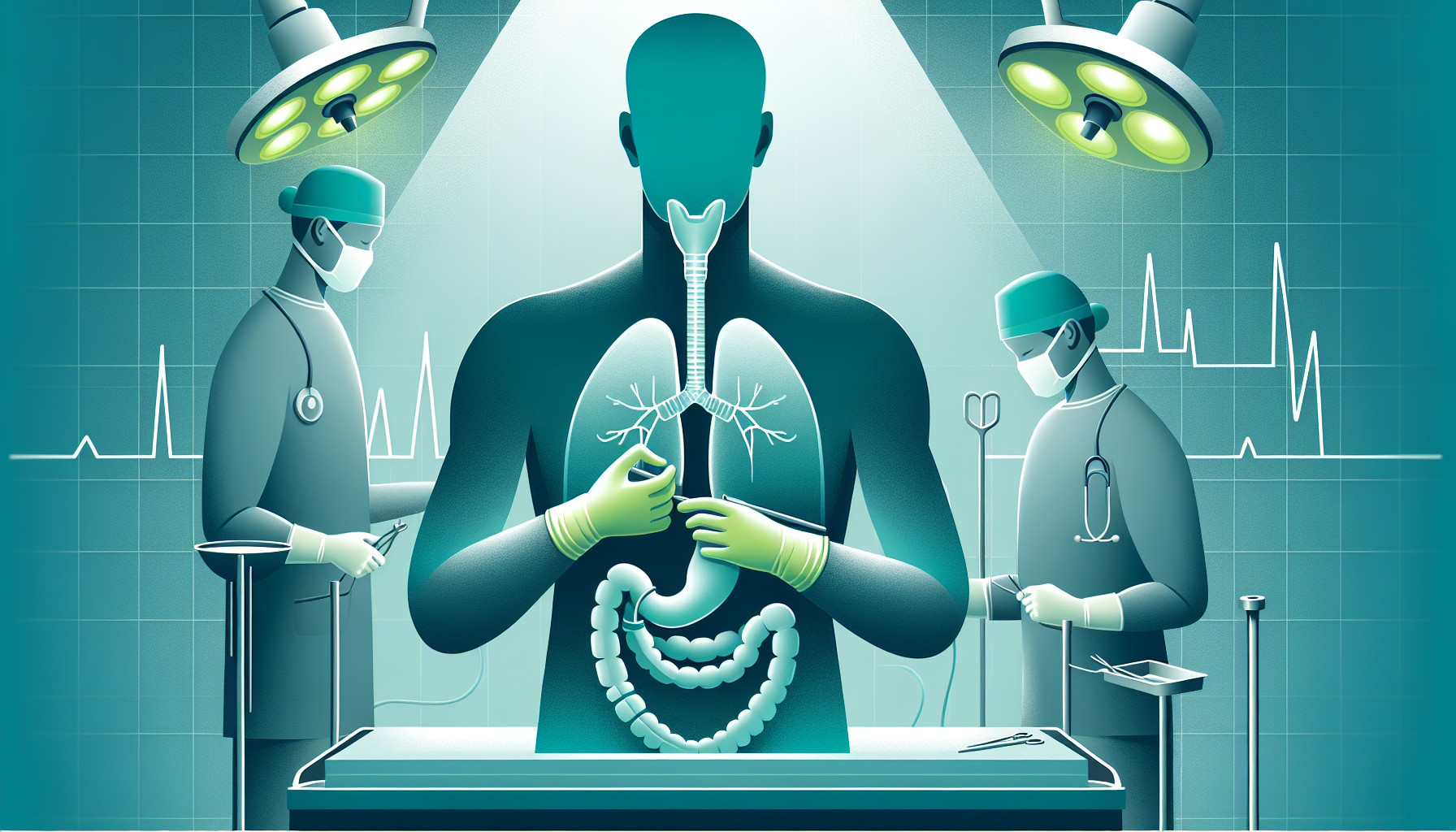Our Summary
This study looked at how often complications occurred after a type of surgery called minimally invasive esophagectomy (MIE) - which is a procedure to remove part of the esophagus. They specifically looked at whether the surgery was done using robotic assistance or through a method called video-assisted thoracoscopic surgery (VATS).
The researchers found that there were no significant differences in the rate of complications, length of hospital stay, need to re-operate, or discharge needs between the two methods. However, they did notice that a complication called a chyle leak was more likely to occur if the surgery was done using a three-hole or robotic method.
Interestingly, the surgeon’s experience with robotic surgery seemed to impact the rate of chyle leaks - the more experienced the surgeon was with the robotic method, the less likely a chyle leak occurred.
The study concluded that while the two methods have similar outcomes in terms of complications and hospital stay, certain surgical techniques and the surgeon’s experience with robotic surgery could influence the results. This suggests that further training and improvement in surgical techniques could potentially reduce the risk of complications like chyle leaks.
FAQs
- What is a minimally invasive esophagectomy (MIE) and what methods are used to perform it?
- Were there any significant differences in the complication rates between robotic-assisted surgery and video-assisted thoracoscopic surgery (VATS)?
- How does the surgeon’s experience influence the outcome of a minimally invasive esophagectomy (MIE)?
Doctor’s Tip
One helpful tip that a doctor might give to a patient undergoing esophagectomy is to discuss with their surgeon about the surgical method being used and the surgeon’s experience with that method. Patients should inquire about the potential risk of complications, such as chyle leaks, and ask about any specific techniques that may help reduce these risks. Additionally, patients should follow their surgeon’s post-operative instructions carefully to aid in a smooth recovery process.
Suitable For
Patients who are typically recommended for esophagectomy include those with esophageal cancer, Barrett’s esophagus with high-grade dysplasia, or severe esophageal strictures that cannot be managed with other treatments. Additionally, patients with benign esophageal diseases such as achalasia or refractory gastroesophageal reflux disease may also be candidates for esophagectomy. The decision to undergo esophagectomy is made on a case-by-case basis by a multidisciplinary team of physicians, including gastroenterologists, oncologists, thoracic surgeons, and other specialists.
Timeline
Before esophagectomy:
- Patients undergo a series of tests and evaluations to determine if they are a candidate for esophagectomy.
- They may need to modify their diet and lifestyle leading up to the surgery.
- Pre-operative appointments and consultations are scheduled to discuss the procedure and address any concerns.
- Patients may need to stop certain medications and follow specific instructions from their healthcare team.
After esophagectomy:
- Patients are monitored closely in the intensive care unit immediately after surgery.
- They may experience pain, discomfort, and difficulty swallowing in the days following the procedure.
- Physical therapy and breathing exercises are initiated to aid in recovery.
- Patients gradually transition to a liquid diet and then solid foods as tolerated.
- Follow-up appointments are scheduled to monitor progress and address any complications or concerns.
- Patients may require additional support and rehabilitation to regain strength and function post-surgery.
What to Ask Your Doctor
- What are the potential risks and complications associated with esophagectomy surgery?
- Are there any specific factors that may increase my risk for complications during or after surgery?
- What is your experience with performing minimally invasive esophagectomy, and specifically with robotic-assisted surgery?
- How does the rate of chyle leaks compare between the robotic-assisted and video-assisted thoracoscopic surgery methods?
- How do you plan to minimize the risk of complications during my surgery?
- What is the expected length of my hospital stay following the surgery?
- What will my post-operative care and recovery process look like?
- Are there any specific dietary or lifestyle changes I should make before or after the surgery?
- What symptoms should I watch out for that may indicate a complication or issue following the surgery?
- How frequently will I need follow-up appointments after the surgery, and what will be monitored during these appointments?
Reference
Authors: Dezube AR, Kucukak S, De León LE, Kostopanagiotou K, Jaklitsch MT, Wee JO. Journal: Surg Endosc. 2022 Feb;36(2):1332-1338. doi: 10.1007/s00464-021-08410-4. Epub 2021 Mar 3. PMID: 33660122
